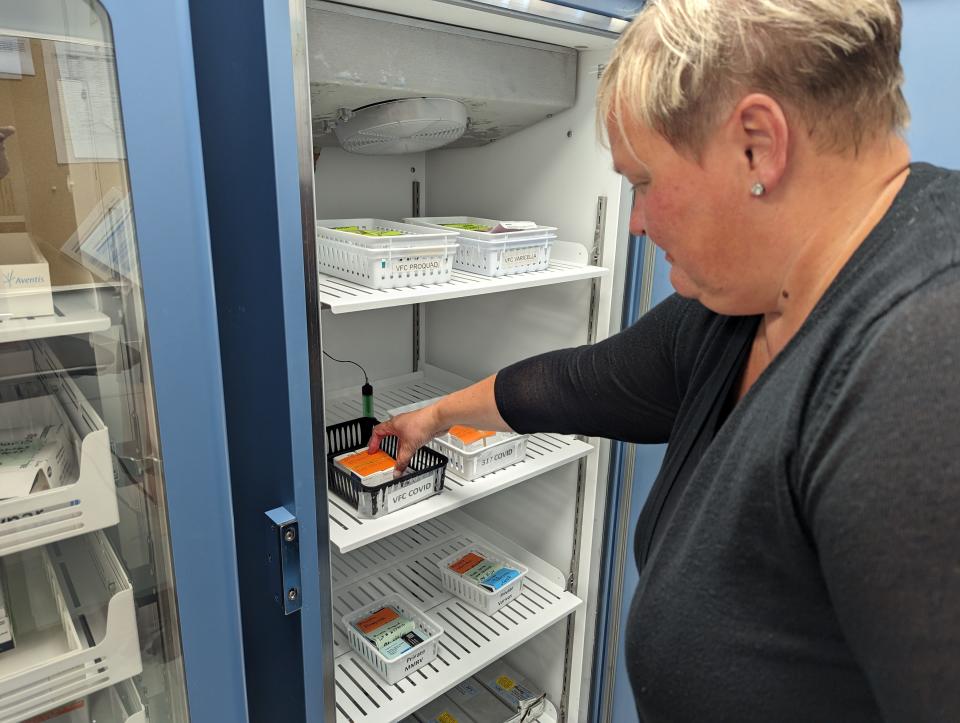Renewal levy on the ballot for Sandusky County Public Health
A renewal of the levy for the Sandusky County Public Health department is on the ballot for the Nov. 7 election.
The proposed tax levy is for a renewal of the 5-year, 0.5 mill levy. If approved, it would commence in 2024 and will be collected starting in 2025. The annual cost to a property owner would be $15 for each $100,000 of the county auditor’s appraised value. The estimated value, as determined by the county auditor, to the Sandusky County Combined General Health District would result in a collection of $711,000 annually.

Bethany Brown, director of the Sandusky County Public Health department, said that the collected funds are not their only source of funding. Their budget is more than six times the size of the levy. They also recieve grants and fees for various services. This levy money would go into the department's general fund.
"We are one of the smallest levies in the county. I think 911 is smaller than us," Brown said "We have run on the 0.5-mill levy for close to 40 years, without an increase. I think that shows that we are really good stewards of our money."
Public health covers a wide range of programs
The health department does more than health education. It also provides nursing, home visiting, the WIC program, clinics, environmental services and certificates for births and deaths.
She pointed out that there is often some confusion with what it does, because of the name of one of its divisions, the Environmental Division.
"That is food inspections, water, sewer, nuisance complaints and tattoo parlors. We also do rabies, like dog bites, bats, raccoons, cats, you name it. We get no money for that. It's an unfunded mandate. We call it the Board of Health fund, which is the levy dollars. It covers those costs, but then we also have overhead: rent, supplies, copy machine and those types of utilities."
The county recently paid for a new HVAC system, but the department still has to pay for its phones and internet.
The 2022 Annual Report showed 4,044 immunizations, 530 flu vaccines and 1,579 COVID-19 vaccines administered, including 642 doses of the bivalent booster. Other statistics showed reported cases of communicable diseases, that health department nurses provided services to 227 children in the Children with Medical Handicap diagnostic, treatment and/or service coordination program, and that of 154 tuberculosis skin tests there were no positive cases found.
Health funding is complicated
Brown explained that using grant money can be difficult.
"Grants will only let you pay for certain things, and not other things," she said. "So it's kind of a balancing act, as we work with what's covered and what's not."
Brown explained some of the unusual pandemic-related swings in budgeting, revenue and expenses that the health department has had to deal with in the past year, which has also included some new unfunded mandates. This year is an anomaly.
"The way public health works, it's either feast or famine," Brown said. "We are usually just breaking even."
The 2022 fiscal year had revenues of $4.5 million and expenses of $3.34 million, for which she urged caution in thinking that the department was flush with money.
She said it's possible that the next fiscal year it could have more expenses than revenue.
"Our revenues this past year, with the overages, that was due to COVID. We received additional dollars for the COVID response. We also received additional monies from the (county commissioners), which was the American Rescue Plan dollars," Brown said. "We also received some new grants this year. Yes, we did receive the revenue, but we haven't expensed it yet. This next year, it's going to be way closer than what is shown here."
She gave the example of 2019.
"In 2019, our carryover was $100,000. We weren't sure how we were going to pay our bill until we got our levy, then, guess what? COVID hit," Brown said. "It wasn't like we were just handed money. I had to write 12 grants to get that money, and then they were earmarked for certain purposes. They couldn't be used just for anything."
Some of the restrictions led to money being lost, because the rules changed during the allotted periods of time the health department was allowed to spend the money, and the department was not set up for using the money in the new required way.
"It was insanity," Brown said, shaking her head.
rlapointe@gannett.com
419-332-2674
This article originally appeared on Fremont News-Messenger: Levy helps health department with unfunded mandates

